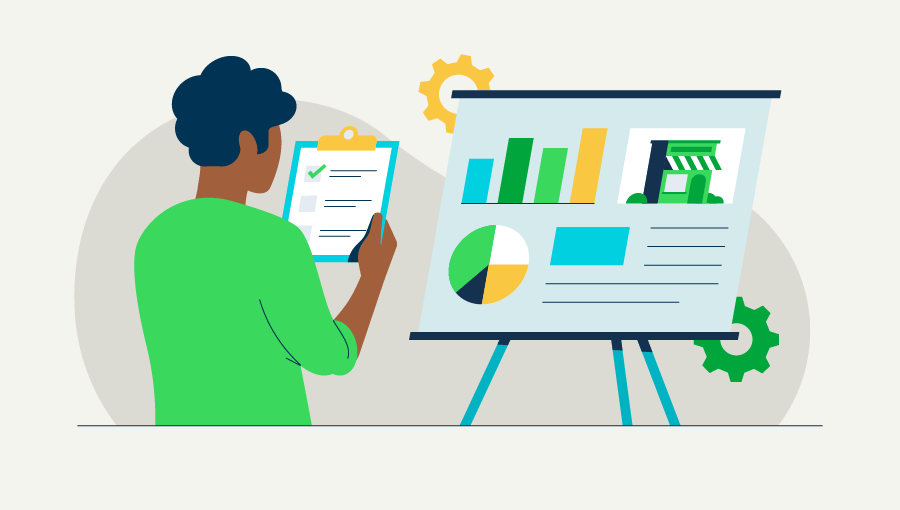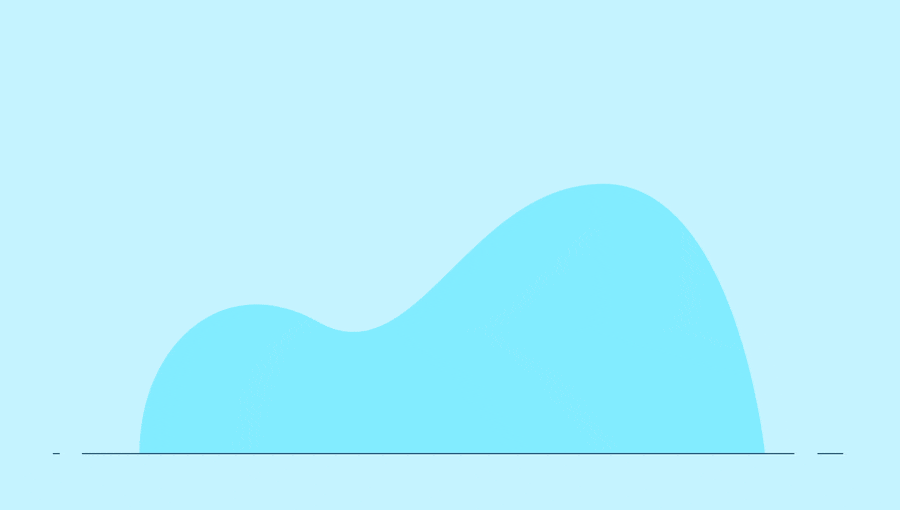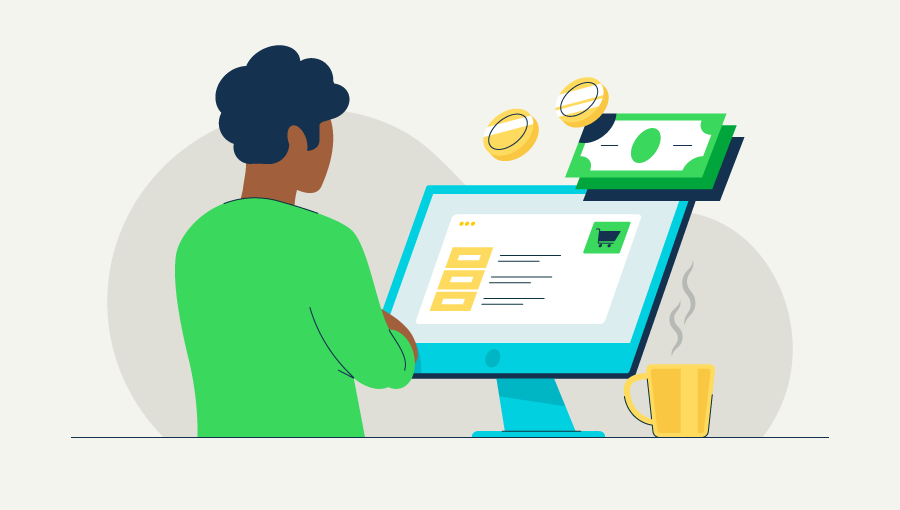A fixed cost analysis is a component of cost accounting. Cost accounting requires business owners to analyze types of costs and production volumes and assign all costs to a unit of output. As a business owner, you can’t generate a profit without covering all fixed and variable costs. But to cover those fixed and variable costs, you have to understand the differences and know how to calculate average fixed costs.

Fixed Costs: What Are They and How to Calculate Them?
What is a fixed cost?
Fixed costs (or fixed expenses) are constant, regardless of changes in sales or production levels. Variable costs, however, change as your sales and production levels fluctuate. The total cost of a product or service is the sum of fixed and variable costs.
If you can control fixed expenses, you can benefit from economies of scale. A business owner who can increase business with the same $20,000 piece of equipment can generate higher profits. Their goal would be to maximize the quantity of output (sales volume and production levels) using a fixed asset.
4 types of costs: fixed, variable, direct, and indirect costs
In addition to fixed and variable, costs may be either direct or indirect. These four terms are related and explain why a business incurs a particular cost.
Business expenses that you can trace directly to the product or service are direct costs. Commonly, raw materials and labor are direct costs. Let’s look at an example. Prestige Clothing manufactures apparel. Their variable direct costs include cotton material and the labor to run machinery.
Prestige cannot trace indirect costs (or overhead costs) to production directly. Instead, they allocate these costs to business activity levels. When the company incurs repair costs on machinery—a variable indirect cost—they cannot trace those costs back to production. So Prestige allocates repair costs to the machine hours required in a year. Machine hours is an effective way to allocate repair costs. The more Prestige uses a machine, the more maintenance it will require.
Let’s say Prestige wants to calculate their unit cost for repairs. To do that, they divide a machine’s repair and maintenance costs for one year by the machine hours used in the same year. Last year, a machine had $500,000 in repair and maintenance costs and 2,000,000 machine hours. So Prestige spent 25¢ per machine hour. If a production run of shirts requires 100 machine hours, Prestige might add the $25 repair costs to the shirt costs.
Examples of fixed costs
Fixed expenses may be direct or indirect costs. Here are four common examples of fixed costs:
- Management salaries. Salaries are an indirect fixed expense. The cost is constant and does not change with sales or production.
- Insurance premiums. Insurance is a fixed cost. It’s based on the premiums listed in an insurance policy.
- Interest payments. Interest expenses from a loan are fixed costs. They’re based on your loan’s interest rate and the principal amount you owe. Usually, loan payments include interest payments and principal balance payments.
- Property taxes. This cost is fixed. It’s based on the value of the property taxed and the tax rate.
If Prestige paid a fixed annual contract for a service related to production, the expense would be a direct fixed cost. Assume that the company hires a quality control manager to monitor production and reduce defective units produced. The business’s management salaries are indirect fixed costs. But the $50,000 quality-control management salary is a direct fixed cost.
Examples of variable costs
When you review line items in your income statement, you may see more variable expenses than fixed monthly payments. Here are three common examples of variable costs:
- Depreciation expenses. Your business may buy and sell assets throughout the year. As a result, the depreciation expense listed in your financial statements may change over time.
- Utility costs. These total variable costs increase based on extreme weather conditions and the size of the space that you must heat and cool.
- Hourly wages. If you decide to change your production schedule from two shifts to three, these variable costs increase.
How to find and calculate fixed costs
You can use your income statement to find and calculate the total fixed expenses your business incurs. Review the expense section of your income statement for a particular month or year to identify each fixed expense. Add up the line items to calculate the sum of total fixed costs.
What is an average fixed cost?
Many businesses use average fixed costs to make decisions and measure how effectively they use production costs. But the dollar amount can be misleading. Average fixed costs divide a business’s total fixed costs by the number of units it produces. The ratio produces a fixed expense per unit, which is information you must use carefully. The formula follows:
Total fixed costs / number of units produced = average fixed cost
Let’s say Prestige’s total fixed expenses were $300,000 in 2019. And in that year, they produced 15,000 shirts. Using the average fixed cost formula, Prestige finds its fixed expense per shirt is $20. But if Prestige can produce 20,000 shirts with the same $300,000, they can reduce their average fixed cost to $15.
But don’t let the fixed cost per unit mislead you. Once you produce and sell enough items to pay the total dollar amount of fixed expenses, you no longer incur the cost. Each unit you produce after you cover all fixed expenses costs the customer less and generates more profit.
Let’s assume that, as of December 27, 2019, Prestige produced and sold 15,000 shirts and that each shirt’s price included a $20 fixed cost. The business has covered its $300,000 total fixed expenses for 2019. So if a customer orders 300 shirts for delivery by December 31, the price of those shirts would not include any fixed costs. But those 300 shirts have marginal costs—or the cost to produce one more unit. The marginal cost of producing 300 more shirts includes variable costs but not fixed expenses.
When you’re pricing your products, analyze both average fixed costs and total fixed costs. Don’t assign fixed costs to new production if you haven’t paid total fixed costs in full. If you understand fixed, variable, and total costs, you can perform more valuable business analysis.
How to calculate the breakeven point in units using fixed and variable costs
Several useful formulas use fixed and variable expenses, including the breakeven-point-in-units formula. This breakeven-point-in-units formula calculates the number of units you must sell to cover all costs. Each unit sold above the breakeven level generates profit.
The breakeven-point-in-units formula divides the business’s fixed costs by the sales price per unit subtracted from the variable costs per unit. The formula follows:
Fixed costs / (sales price per unit – variable costs per unit) = breakeven point in units
Let’s say Prestige sells a jacket for $100. The variable costs per jacket are $60, and the business incurs $200,000 in fixed costs. Using the breakeven-point-in-units formula, Prestige finds their breakeven point in units is 5,000 jackets. If Prestige sells 5,100 jackets, they make a profit on 100 jackets.
If you want to find your ideal breakeven point in units, you might adjust the sales price, variable costs, and fixed costs. If you know the details of the costs you incur, you can perform an analysis to lower costs, increase sales, and boost profits.










